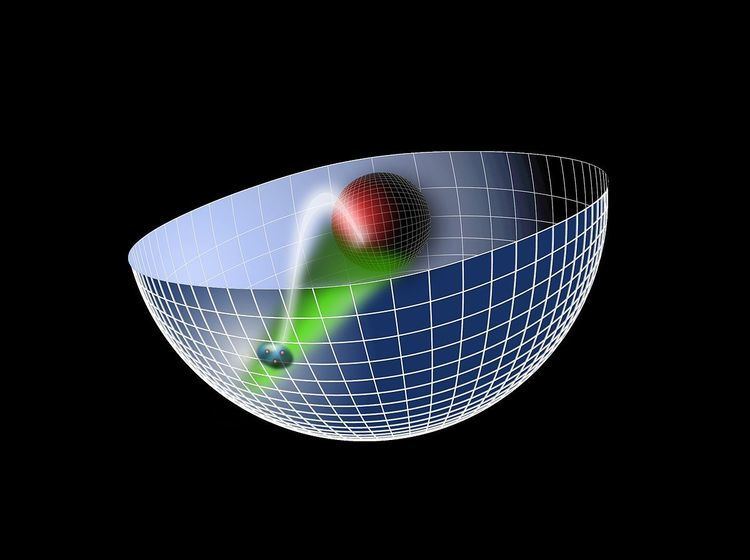 | ||
In strong interaction physics, light front holography or light front holographic QCD is an approximate version of the theory of quantum chromodynamics (QCD) which results from mapping the gauge theory of QCD to a higher-dimensional anti-de Sitter space (AdS) inspired by the AdS/CFT correspondence (gauge/gravity duality) proposed for string theory. This procedure makes it possible to find analytic solutions (closed-form expression) in situations where strong coupling occurs (the "strongly coupled regime"), improving predictions of the masses of hadrons (such as protons, neutrons, and mesons) and their internal structure revealed by high-energy accelerator experiments. The most widely used approach to finding approximate solutions to the QCD equations, lattice QCD, has had many successful applications; however, it is a numerical approach formulated in Euclidean space rather than physical Minkowski space-time.
Contents
Motivation and background
One of the key problems in elementary particle physics is to compute the mass spectrum and structure of hadrons, such as the proton, as bound states of quarks and gluons. Unlike quantum electrodynamics (QED), the strong coupling constant of the constituents of a proton makes the calculation of hadronic properties, such as the proton mass and color confinement, a most difficult problem to solve. The most successful theoretical approach has been to formulate QCD as a lattice gauge theory and employ large numerical simulations on advanced computers. Notwithstanding, important dynamical QCD properties in Minkowski space-time are not amenable to Euclidean numerical lattice computations. An important theoretical goal is thus to find an initial approximation to QCD which is both analytically tractable and which can be systematically improved.
To address this problem, the light front holography approach maps a confining gauge theory quantized on the light front to a higher-dimensional anti-de Sitter space (AdS) incorporating the AdS/CFT correspondence as a useful guide. The AdS/CFT correspondence is an example of the holographic principle, since it relates gravitation in a five-dimensional AdS space to a conformal quantum field theory at its four-dimensional space-time boundary.
Light front quantization was introduced by Paul Dirac to solve relativistic quantum field theories. It is the ideal framework to describe the structure of the hadrons in terms of their constituents measured at the same light-front time,
Light front holographic methods were originally found by Stanley J. Brodsky and Guy F. de Teramond in 2006 by mapping the electric charge and inertia distributions from the quark currents and the stress–energy tensor of the fundamental constituents within a hadron in AdS to physical space time using light-front theory. A gravity dual of QCD is not known, but the mechanisms of confinement can be incorporated in the gauge/gravity correspondence by modifying the AdS geometry at large values of the AdS fifth-dimension coordinate
Light front wave equation
In a semiclassical approximation to QCD the light-front Hamiltonian equation
where
